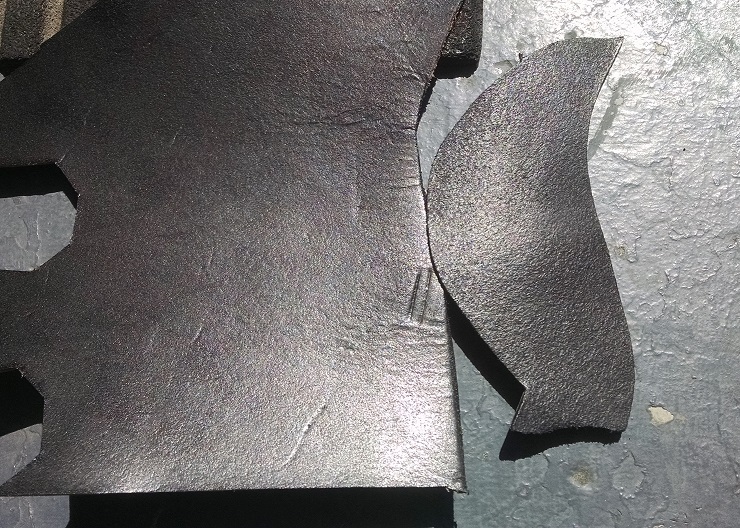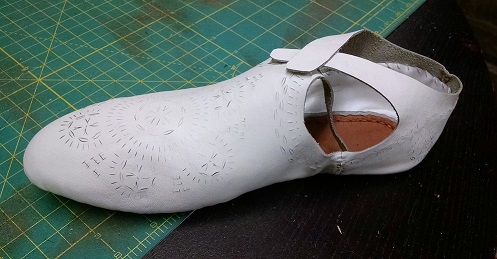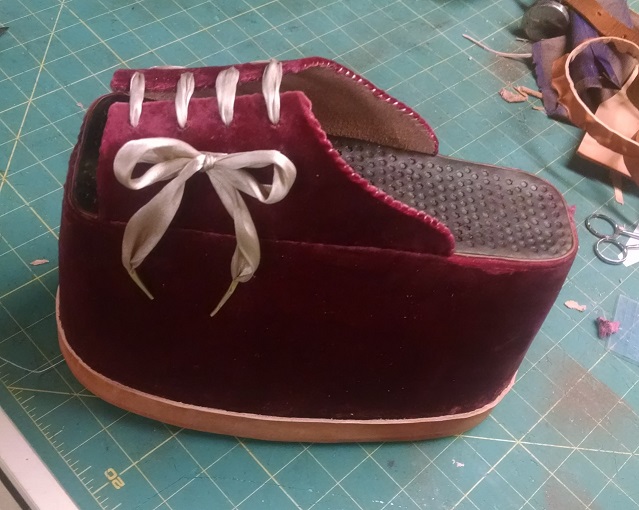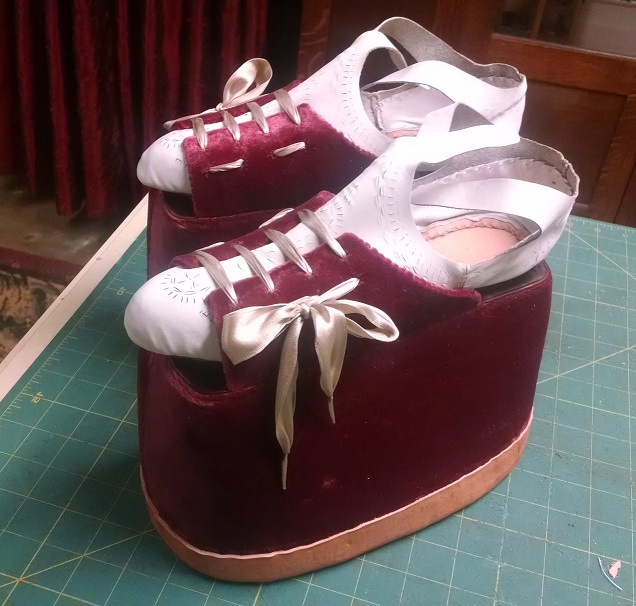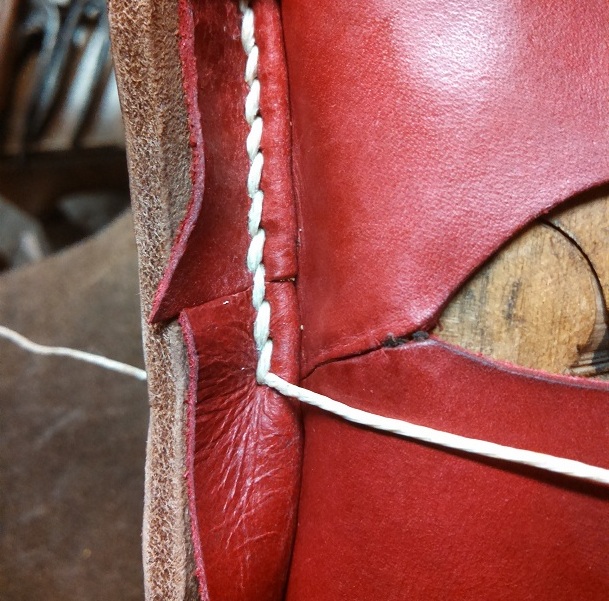In the 18th century, leather was often dyed on the flesh (the slightly rough side), impregnated with wax, and then polished to get a sheen on it. When done correctly, it can look very similar to the grain (the smooth side), but nicks and scratches can more easily be buffed out. The last (to my knowledge) source of black waxed calf was Dickens Bros., who have since retired and are no longer producing. I recently made an attempt to make something that looks similar from regular vegetable tanned leather, though it certainly doesn’t have the hand and scent of the Dickens Bros. material. The test scrap is on the right, with the true waxed calf on the left. But, I am optimistic it will do until a new source can be found.
Making this was rather straightforward, though it remains to be seen how well it will react when having a pair of shoes made up in it.
Continue reading Quick Black Waxed Calf
